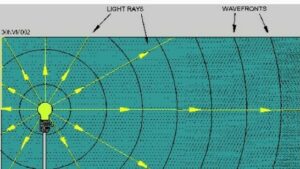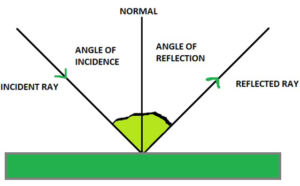Table of Contents
Light is observed to travel in a straight line at all times. When we look at a light source through a long pipe with openings at both ends, for example, the light source is clearly visible. However, if we bend this pipe so that it is no longer straight and then try to look at the light source, we will notice that it is no longer visible. This demonstrates light’s property of always travelling in a straight line. Rectilinear propagation of light refers to the property of light always travelling in a straight line. An electromagnetic wave is exemplified by light.
This means that it is made up of both an electric and a magnetic field. Both the electric and magnetic fields are perpendicular to one another. These waves have their own period and power, which determines the wavelength and observed colour of the light. Light propagation is the process by which an electromagnetic wave transfers energy from one point to another. When light travels from one medium to another, three major processes take place: transmission, reflection, and refraction.

The property of rectilinear light propagation is used in many fields. It is used to construct a pinhole camera. The pinhole camera is a simple device that produces inverted images on a screen inside a lightproof chamber. The pinhole camera does not have a lens; instead, it has a small hole known as a pinhole. An inverted image is formed on the opposite side of the camera when light from a distant object passes through the pinhole. This is referred to as the ‘camera obscura’ effect.
Laws Of Reflection
The angle of the reflected ray is equal to the angle of the incident ray with respect to the normal to the surface, that is to a line perpendicular to the surface at the point of contact, according to the law of reflection. The reflected ray is always in the plane defined by the incident ray and the normal to the surface at the point where the incident ray makes contact with the surface. The law of reflection can be used to explain the images produced by plane and curved mirrors.Light is reflected off the surfaces. Any surface that has been polished, or is shiny, always acts as a mirror. Reflection is the observation of light bouncing off surfaces. After reflection, the light travels in the same medium as the incident ray on the surface.
Reflection does not change the velocity of light; it simply reverses the direction of light incident on it. This can be seen on any surface, rough or smooth. The path of the reflected ray is determined by the degree of smoothness of the surface; in the case of a smooth surface, the reflected ray emerges with the same angle as the angle of incidence, whereas in the latter case, irregularities occur.

The following is the definition of the law of reflection:
When light rays strike a smooth surface, the angle of reflection equals the angle of incidence, and the incident ray, reflected ray, and surface normal all lie in the same plane.
The incident ray is the light ray that strikes a reflecting surface, and the reflected ray is the light ray that is reflected back. The normal is an imaginary line perpendicular to the reflecting surface from where the reflection occurs. The angle of incidence ∠I is the angle formed by the incident rays and the normal. The angle of reflection ∠r is the angle formed by the reflected rays and the normal.
FAQs
Mention the second law of reflection.
The incident ray, the normal to the mirror at the point of incidence, and the reflected ray all lie in the same plane, according to the second law of reflection.
What are the three reflection laws?
The incident ray, normal ray, and reflected ray all exist in the same plane. The plane's angle changes as the incident ray's direction changes. The incident ray, normal line, and reflected ray are all in the same plane.
What are the various modes of light propagation?
Light can travel from one location to another in three ways: (1) directly from the source through empty space; (2) through various media; and (3) after being reflected by a mirror.





